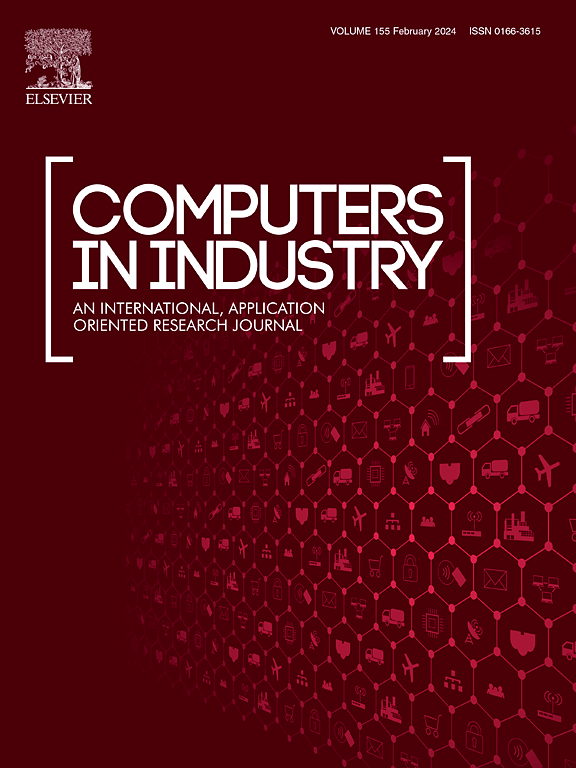Maximum subspace transferability discriminant analysis: A new cross-domain similarity measure for wind-turbine fault transfer diagnosis
IF 9.1
1区 计算机科学
Q1 COMPUTER SCIENCE, INTERDISCIPLINARY APPLICATIONS
引用次数: 0
Abstract
In the field of fault transfer diagnosis, many approaches only focus on the distribution alignment and knowledge transfer between the source domain and target domain. However, most of these approaches ignore the precondition of whether this transfer task is transferable. Current mainstream transferability discrimination methods heavily depend on expert knowledge and are extremely vulnerable to the noise interference and variations in feature scale. This limits their applicability due to the intelligent requirements and complex industrial environment. To address the challenges mentioned previously, this paper introduces a novel cross-domain similarity measure called maximum subspace transferability discriminant analysis (MSTDA) with zero-label prior knowledge. MSTDA is comprised of a maximum subspace representation and a similarity measurement criterion. During the phase of maximum subspace representation, a new kernel-induced Hilbert space is designed to map the low-dimensional original samples into the high-dimensional space to maximize the separability of different faults and then solve the separable intrinsic fault features. Following that, a novel similarity measurement criterion that is resistant to variations in feature scale is developed. This criterion is based on the orthogonal bases of intrinsic feature subspaces. The mini-batch sampling strategy is used to ensure the timeliness of MSTDA. Finally, the experimental results on three cases, particularly in the actual wind turbine dataset, confirm that the proposed MSTDA outperforms other well-known similarity measure methods in terms of transferability evaluation. The related code can be downloaded from https://qinyi-team.github.io/2024/09/Maximum-subspace-transferability-discriminant-analysis.
最大子空间转移性判别分析:用于风力涡轮机故障转移诊断的新型跨域相似性测量方法
在故障转移诊断领域,许多方法只关注源域和目标域之间的分布对齐和知识转移。然而,这些方法大多忽略了这一转移任务是否具有可转移性这一前提条件。目前主流的可转移性判别方法严重依赖专家知识,极易受到噪声干扰和特征尺度变化的影响。由于智能化要求和复杂的工业环境,这限制了它们的适用性。为应对上述挑战,本文引入了一种新型跨域相似性测量方法,即零标签先验知识下的最大子空间可转移性判别分析(MSTDA)。MSTDA 由最大子空间表示和相似性测量标准组成。在最大子空间表示阶段,设计一个新的内核诱导希尔伯特空间,将低维原始样本映射到高维空间,以最大限度地分离不同故障,然后求解可分离的内在故障特征。随后,开发了一种新型的相似性测量准则,该准则可抵御特征尺度的变化。该准则基于内在特征子空间的正交基。微型批量采样策略用于确保 MSTDA 的及时性。最后,三个案例的实验结果,尤其是实际风力涡轮机数据集的实验结果,证实了所提出的 MSTDA 在可移植性评估方面优于其他著名的相似性度量方法。相关代码可从 https://qinyi-team.github.io/2024/09/Maximum-subspace-transferability-discriminant-analysis 下载。
本文章由计算机程序翻译,如有差异,请以英文原文为准。
求助全文
约1分钟内获得全文
求助全文
来源期刊

Computers in Industry
工程技术-计算机:跨学科应用
CiteScore
18.90
自引率
8.00%
发文量
152
审稿时长
22 days
期刊介绍:
The objective of Computers in Industry is to present original, high-quality, application-oriented research papers that:
• Illuminate emerging trends and possibilities in the utilization of Information and Communication Technology in industry;
• Establish connections or integrations across various technology domains within the expansive realm of computer applications for industry;
• Foster connections or integrations across diverse application areas of ICT in industry.
 求助内容:
求助内容: 应助结果提醒方式:
应助结果提醒方式:


